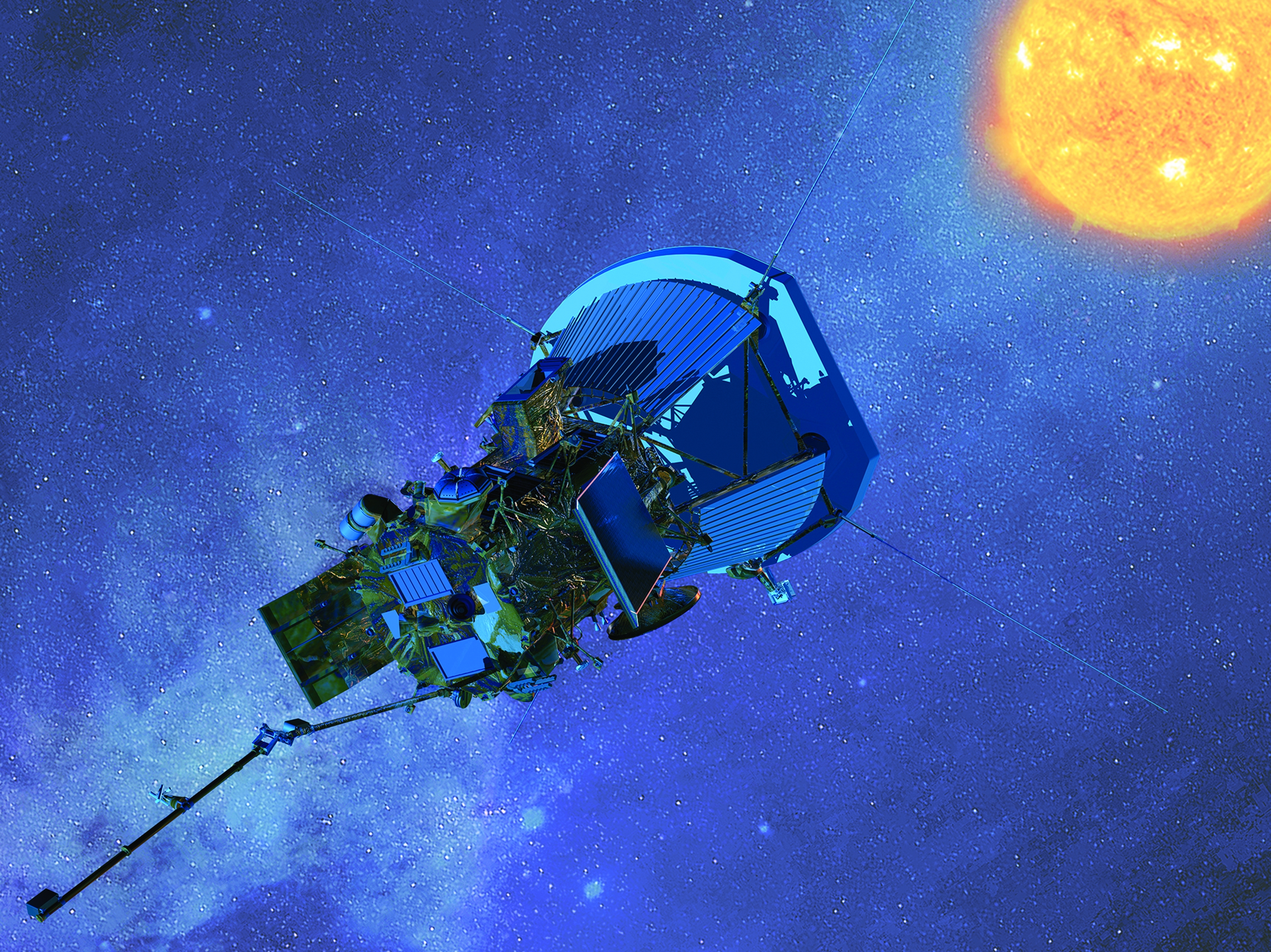Satellite
Parker Solar Probe is a specially designed three-axis-stabilized satellite. To enable it to withstand the extreme heat at perihelion, the satellite will have a heatshield pointed permanently at the Sun with apertures for its instruments to see through. It will provide a thermally stable environment and stable pointing for these instruments.

Parker Solar Probe is being designed and built by the Applied Physics Laboratory at the Johns Hopkins University in Laurel, Maryland.
![]()
Parker Solar Probe with its solar panels stowed
Parker Solar Probe is carrying remote-sensing instruments designed to observe the solar corona, as well as in-situ instruments designed to collect data on the spacecraft’s immediate environment. NASA selected four suites of instruments for the mission in September 2010:
- SWEAP (Solar Wind Electrons Alphas and Protons- PI Justin Kasper SAO)
will characterize the helium electrons, protons and ions making up most of the solar wind.
- WISPR (Wide Field Imager for Solar Probe - PI Russ Howard NRL)
will take 3D pictures of the Sun’s corona and atmosphere.
- FIELDS (PI Stuart Bale, SSL)
will measure electric and magnetic fields, radiowave emissions and plasma wave emissions. The instrument will also be used as a large space dust detector.
- ISIS (Integrated Science Investigation of the Sun-PI David McComas SWRI)
a pair of mass spectrometers that will determine the constituent elements of the Sun’s atmosphere captured in the probe’s immediate environment.
CNES’s responsibilities for Parker Solar Probe’s scientific instrument payload under the terms of the Implementing Arrangement signed with NASA in June 2013 concern the FIELDS and SWEAP instruments.

